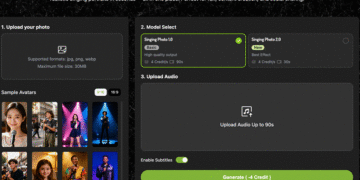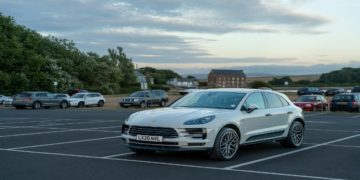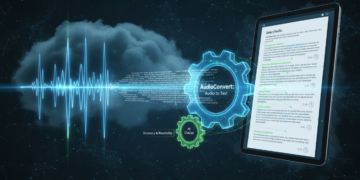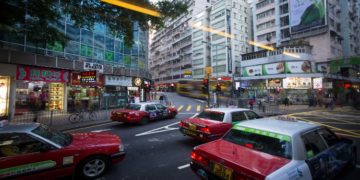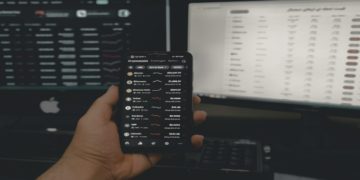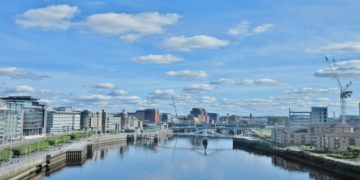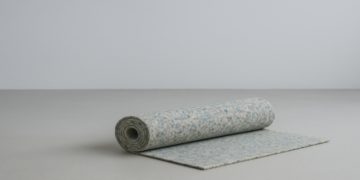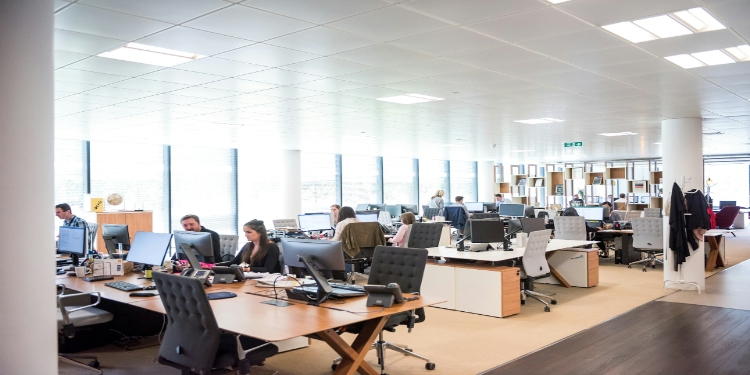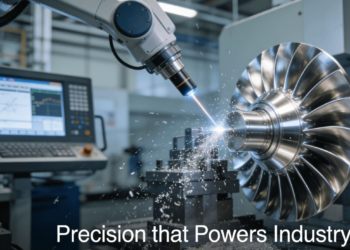Open plan offices are dying. Or at least, they should be. If you’ve spent the last few years juggling video calls with the clatter of keyboards & someone eating crisps five desks over, you already know what I’m talking about. Workplaces aren’t just about fitting as many people as possible into one floor anymore. They’re about actually supporting how people work, think and feel. And that takes more than a few beanbags and a ping pong table.
So what does a smart office actually look like? It’s not some futuristic fantasy with robots delivering your coffee (though that’d be nice). It’s about thoughtful design that adapts to different needs, moods and work styles. I think we’re finally waking up to the fact that one-size-fits-all doesn’t work. Not for jeans, not for offices.
Here are ten features that are trending right now for all the right reasons. Some might surprise you. Others will feel obvious once you read them. But all of them can transform how your team experiences the workplace.
Biophilic Walls That Actually Work
Plants aren’t new. But biophilic walls? They’re having a proper moment. And not just because they look stunning on Instagram (though they do). There’s real science behind bringing greenery indoors. Studies show plants reduce stress, improve air quality and boost concentration. It’s like your office suddenly remembers it exists on planet Earth.
The trick is making them work without creating a maintenance nightmare. I’ve seen too many offices install gorgeous living walls only to have them turn brown three months later because nobody thought about irrigation systems or light levels. You want something that’s either genuinely self-sustaining or has a clear maintenance plan. Preserved moss walls are brilliant if you can’t commit to watering schedules.
Perhaps the best thing about biophilic design is how it softens harsh office environments. Concrete and glass can feel cold. Add layers of green & suddenly the space breathes differently. People actually want to be there.
Don’t just stick plants in corners and call it done. Think vertical gardens, hanging installations, even desk level planters that create natural dividers between workstations.
Adaptive Lighting Systems
Here’s something most people don’t realise until it’s too late. Lighting affects EVERYTHING. Your mood, your energy, your ability to focus, even your sleep patterns after you leave the office.
Adaptive lighting changes throughout the day to mimic natural light patterns. Cooler, brighter light in the morning helps people wake up and focus. Warmer tones later on prevent that harsh fluorescent assault that makes 4pm feel like midnight. Some systems even adjust based on weather conditions or seasonal changes. It sounds fancy but the technology is becoming more accomodate and affordable than you’d think.
I visited an office last year with circadian lighting installed throughout. The difference was subtle but unmistakable. People seemed more alert without being wired. Less of that zombie shuffle you see in badly lit spaces. The facilities manager told me sick days dropped after they installed it, which makes sense when you consider how much artificial lighting messes with our internal clocks.
You don’t need to overhaul everything at once. Start with meeting rooms or focus areas where people spend concentrated time.
Acoustic Storage Solutions
This one’s clever. Really clever. Acoustic storage does double duty, providing both sound absorption AND practical storage space. Because open offices are noisy. We’ve established that. But adding soundproofing often means sacrificing space or dealing with ugly foam panels.
Acoustic storage units solve multiple problems at once. They’re typically made with sound-dampening materials built into cabinets, shelving systems or room dividers. You get somewhere to store files, equipment and personal items whilst simultaneously reducing noise levels. It’s the kind of smart thinking that should’ve been obvious years ago.
The materials matter here. Look for units with acoustic fabric panels or perforated metal backed with sound-absorbing fill. Some are modular, which means you can reconfigure them as your needs change.
I’ve seen these work wonders in collaborative spaces where you need flexibility but can’t have sound bouncing off hard surfaces constantly. They create natural zones without building permanent walls.
Privacy Booths for Focus Work
Remember when we thought removing all the walls would make everyone collaborate more? Yeah. Turns out people also need to, you know, concentrate sometimes. Privacy booths have become essential rather than optional.
These aren’t the old fashioned phone boxes. Modern privacy booths are soundproofed pods designed for video calls, focused work or just escaping the chaos for twenty minutes. Some are single person units. Others fit small teams. The best ones have proper ventilation (trust me on this, I’ve been in stuffy ones and it’s miserable), good lighting and enough space to actually work comfortably.
HCF’s acoustic pods are particularly good for creating quieter zones without major construction. They’re modular, so you can add them where needed & move them if your layout changes. The sound insulation is solid, which matters when you’re on a client call and don’t want the entire office as background noise.
Privacy booths also signal something important to your team. That deep work is valued. That not every minute needs to be collaborative. Some tasks require silence and solitude.
Flexible Furniture That Adapts
Static furniture is out. Adaptable systems are in. And this isn’t just about trendy sit-stand desks (though those are good too).
Flexible furniture means spaces that can transform based on what’s needed that day. Mobile whiteboards, nesting tables, modular seating that can be arranged for presentations or broken into small discussion groups. The office becomes a toolkit rather than a fixed environment.
I’m particularly fond of furniture on castors. Sounds simple, but being able to reconfigure a room in five minutes instead of half an hour changes how people use spaces. Got an unexpected team meeting? Move things around. Need to create breakout areas for a workshop? Done. It removes friction from the workday.
Height adjustable everything is becoming standard too. Desks obviously, but also meeting tables, screens and storage. Because people aren’t all the same size & pretending they are is just daft.
Wellbeing Zones That Mean It
Every office claims to care about wellbeing now. Most show it with a fruit bowl and some motivational posters. That’s not what I’m talking about.
Real wellbeing zones are dedicated spaces designed for rest, recharge or gentle activity. Quiet rooms with comfortable seating where screens aren’t allowed. Spaces for stretching or yoga. Even nap pods in some progressive offices (still controversial in the UK but increasingly common elsewhere).
The key is making them feel separate from work zones. Not just a corner of the breakroom with a yoga mat rolled up in the corner. Actual intentional spaces that signal ‘this is for you, not productivity’.
Lighting, acoustics and temperature all matter here. You can’t relax in a bright fluorescent room with the air con blasting. Softer lighting, warmer temperatures and sound masking or gentle background noise work better.
Some companies are sceptical about dedicating space to “not working”. But burnout is expensive. Much more expensive than a quiet room with some decent chairs.
Smart Climate Control Systems
Office temperature wars are legendary. Someone’s always freezing whilst someone else is melting. Smart climate systems are finally addressing this ancient problem.
Zone-based temperature control lets different areas maintain different climates. Meeting rooms can be cooler (because bodies generate heat when packed together). Individual workstations might have personal climate controls. The system learns patterns over time & adjusts automatically.
Air quality monitoring is part of this too. CO2 sensors that trigger ventilation when a room gets stuffy. Humidity controls that prevent that weird too-dry feeling you get in winter. It all adds up to an environment that feels BETTER without anyone consciously noticing why.
The sustainability angle matters here as well. Smart systems use less energy because they’re not heating or cooling empty spaces. They optimise based on actual usage patterns rather than running full blast from 7am to 7pm regardless of occupancy.
Technology Integration Done Right
We’re drowning in technology. But most offices still make you hunt for cables, guess which remote controls which screen or book meeting rooms through three different systems. Technology integration means all this stuff just works.
Wireless presentation systems so you don’t spend ten minutes at the start of every meeting faffing with adaptors. Integrated booking systems that show room availability at a glance & let you reserve spaces from your phone. Cable management that isn’t a tangled nightmare under every desk.
The best technology is invisible. You walk into a meeting room, your laptop connects automatically, the screen wakes up and you start presenting. No drama. No technical difficulties eating into your agenda.
This requires planning though. Too many offices bolt on technology as an afterthought. Then wonder why nothing talks to anything else and half the equipment never gets used because it’s too complicated.
Final Thoughts
Smart office design isn’t about following every trend or spending a fortune on flashy features. It’s about understanding how people actually work & creating environments that support rather than hinder them.
Some of these features might seem like nice-to-haves. But talk to anyone working in a thoughtfully designed office versus a generic one. The difference isn’t subtle. It shows up in productivity, in retention, in how people feel coming to work each morning.
You don’t need to implement everything at once. Start with what addresses your biggest pain points. Maybe that’s noise levels, maybe it’s flexibility, maybe it’s just getting the lighting sorted. Each improvement makes the next one easier.
The offices that succeed are the ones that keep adapting. Not chasing trends blindly, but staying curious about what makes work better for real people. That’s what smart design actually means.
David Prior
David Prior is the editor of Today News, responsible for the overall editorial strategy. He is an NCTJ-qualified journalist with over 20 years’ experience, and is also editor of the award-winning hyperlocal news title Altrincham Today. His LinkedIn profile is here.



